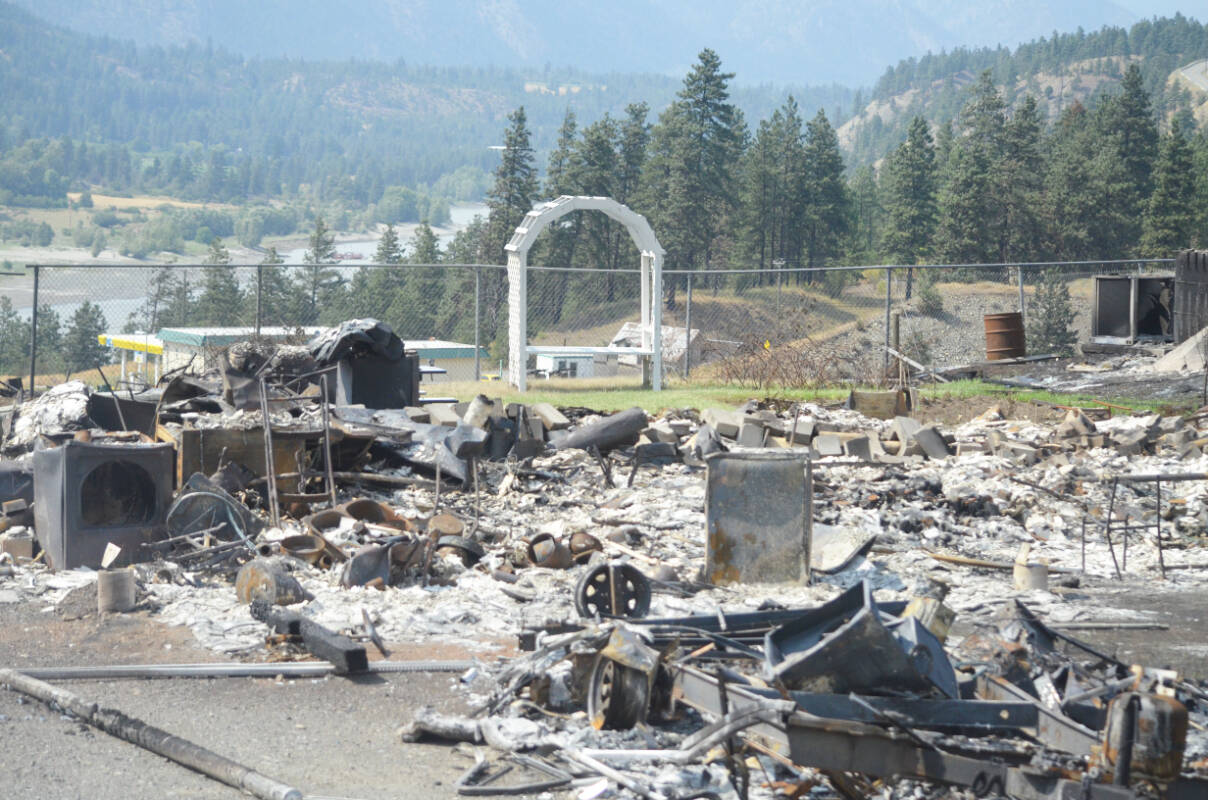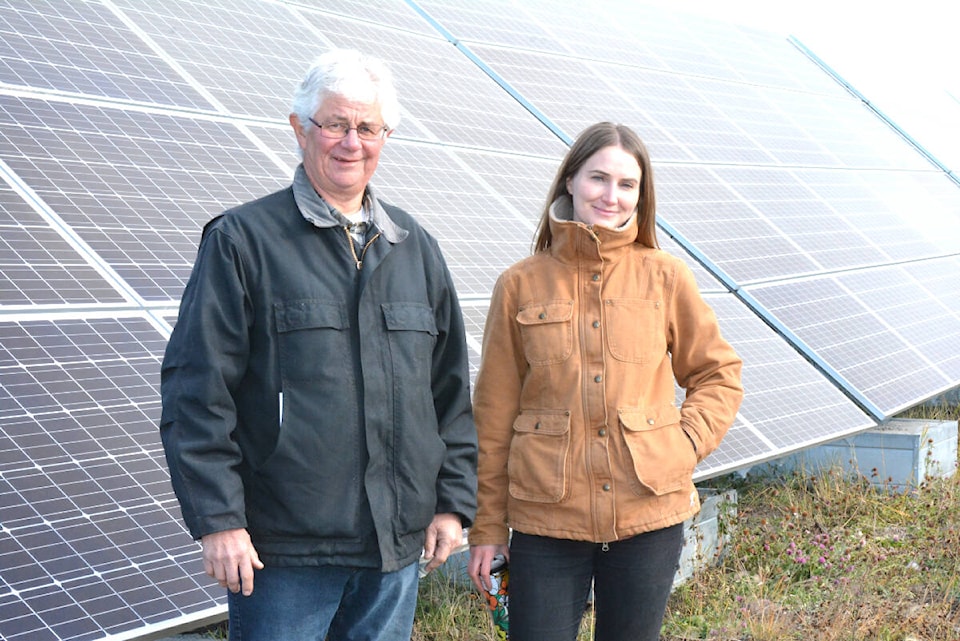Barry Sale
Special to Black Press Media
When he decided to take on a semi-retirement at the end of April 2021, little did local land surveyor Doug Dodge realize how brief this retirement would be. After 45 years in the business, he was looking forward to a quiet life of leisure with a little part-time work with Exton & Dodge Land Surveying thrown in.
Then, on June 30, everything changed. Doug’s hometown of Lytton was virtually destroyed by a fast-moving wildfire. Two people died in the blaze, and 90 per cent of the town’s structures, including his original family home where he lived from 1949 to 1958, were lost. It was a devastating blow to the 250 residents who had hurriedly evacuated with minutes to spare before the fire swept through the townsite.
In July, Doug and B.C. land surveyor Veronica Meister were contacted by the office of the Surveyor General of B.C. to discuss what measures should be taken prior to the demolition and cleanup of Lytton. The Surveyor General wanted to avoid the mistakes made in Alberta following the Fort McMurray wildfire, when the heavy cleanup equipment levelled the whole area, including all the existing property pins. This necessitated a costly and time consuming resurveying of the entire city.
Doug’s surveying abilities were well-known in the Lytton area, since he had undertaken most of the surveys done there over the past 40 years or so. They agreed that it would save considerable time, effort and money to locate and plot all the existing property pins before the ruins of Lytton were cleaned up so that an accurate survey network could be established for the rebuilding of the town.
By the end of October, Doug and Veronica were on site finding the old property pins and using GPS technology to record their positions. The job continued into the first week of November, and then Highway 1 was closed because of major washouts. Early in December, Doug and another surveyor from Exton & Dodge, Darko Ognjanov BCLS, were able to return to the townsite and by December 15, they had completed the first phase of the survey process.
Now, the cleanup can proceed, and when completed, the property pins found in phase one can be reset so that lot boundaries can be re-established to enable reconstruction to occur.
It has been a difficult job for Doug. Not only was the survey process in the wreckage of the townsite a formidable task, but also seeing the utter destruction of the place where he grew up took an emotional toll on him. He looks forward, however, to returning and being involved in the next phase of the process, which will enable a new town to rise from the ashes.
Lytton lies at the confluence of the Fraser and Thompson Rivers. For more than 10 millenia it has been the site of First Nations activity and settlement. The Indigenous name for the area is Camchin or Kumsheen, meaning ‘cross-mouth’ or ‘where the rivers meet.’
During the Fraser River gold rush, a townsite was established there by white settlers, and, in 1858, Governor James Douglas named this settlement after Edward Bulwer-Lytton, the British Secretary of State for Colonies.
As an aside, it is interesting to note that Bulwer-Lytton is not particularly remembered for his career as a government official. He is actually better known as a Victorian novelist. In fact, he is the author who, in his 1930 novel Paul Clifford penned the much used and much abused opening line “It was a dark and stormy night…”
During the gold rush, Lytton became an important stopping place and supply depot. In 1866, there was even an attempt to have the town named as the capital of the newly amalgamated colony of British Columbia, but in the vote at legislature, Victoria won out.
Large fires have been a fact of life in the post gold rush history of Lytton, located as it is where the temperate coastal rainforest meets the semi arid climate of the Interior. The annual hot temperatures and high winds mean that once a fire starts, it is extremely difficult to contain and extinguish. Lytton has seen major fires rage through the town in 1916, 1931, 1938, 1949 and again in 2021.
The 2021 wildfire came after a heat dome of three days with temperatures over 45C. On June 29, the day before the fire, Lytton experienced the highest temperature ever recorded anywhere in Canada at 49.6C. This was also the world’s highest temperature ever recorded north of the 45th parallel.
This wildfire, which is still being investigated and whose cause is still unknown, was one of the worst in B.C.’s history.
At present, Lytton still lies in ruins and its residents are wondering when, if ever, they will be able to return. The Exton & Dodge surveying efforts are just the first steps in the reclamation and rebuilding of this historic old town.
Barry Sale is a retired school teacher and writes a history column for the Williams Lake Tribune.
READ MORE: Delays push cost to rebuild fire-damaged Lytton to $102M: insurance bureau
READ MORE: PHOTOS: Before and after the blaze that destroyed the Village of Lytton
READ MORE: A history of Lytton, from First Nations to the Gold Rush to disastrous fires
news@wltribune.com
Like us on Facebook and follow us on Twitter

